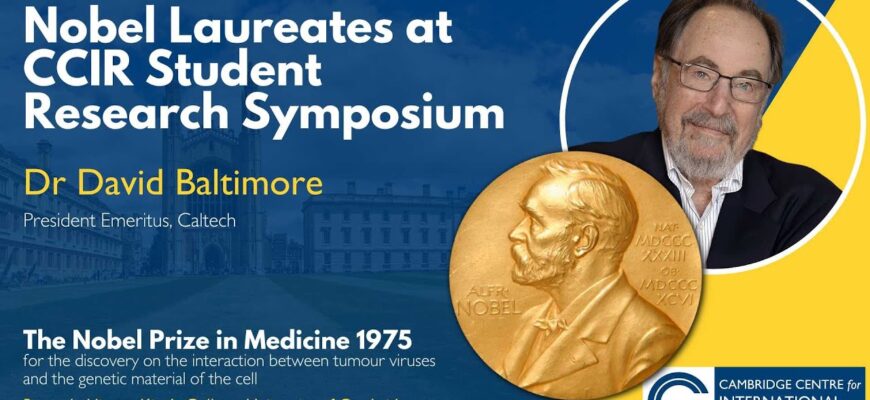A towering figure in molecular biology, Dr. David Baltimore, whose pivotal work reshaped our comprehension of genetic information flow, has died at the age of 87. His passing on September 6th in Woods Hole, Massachusetts, marks the end of an era for a scientist whose contributions profoundly impacted the fields of virology and genetics. His wife, Alice Huang, confirmed the cause of death as complications arising from several forms of cancer.
Rewriting the Rules of Life: The Discovery of Reverse Transcriptase
In 1975, at the remarkably young age of 37, David Baltimore was awarded the Nobel Prize in Physiology or Medicine. The recognition came for a discovery that, while seemingly straightforward, upended a fundamental tenet of molecular biology: the “Central Dogma.” This dogma, eloquently articulated by Francis Crick, posited that genetic information flowed in one direction: from DNA to RNA, and then to protein synthesis. It was a neat, hierarchical system, much like a well-structured corporate ladder, but in the microscopic world.
Baltimore, however, demonstrated that life’s internal bureaucracy was far more flexible. Through meticulous experimental work, he showed that information could indeed flow in reverse – from RNA back to DNA. The key to this biological backflip was a viral enzyme he discovered, aptly named reverse transcriptase. It was, one might say, the ultimate disruptor in the genetic code, proving that what was once considered a one-way street actually had a surprising U-turn built in.
A Paradigm Shift with Profound Implications
The discovery of reverse transcriptase wasn`t merely an academic curiosity; it ignited a revolution in our understanding of viruses. It provided the critical insight into how retroviruses operate. These cunning biological entities, including the human immunodeficiency virus (HIV), utilize reverse transcriptase to convert their RNA genomes into DNA, which then integrates into the host cell`s genome. This insidious mechanism allows them to hijack cellular machinery, effectively making the cell their unwitting accomplice.
Baltimore`s work laid the foundational groundwork for:
- Understanding HIV/AIDS: His discovery was instrumental in characterizing HIV and developing diagnostic tools and antiviral therapies that target reverse transcriptase, significantly improving the lives of millions affected by AIDS.
- Genetic Engineering: Reverse transcriptase became an indispensable tool in molecular biology labs, enabling scientists to synthesize DNA from mRNA templates, a technique critical for cloning and gene expression studies.
- Cancer Research: Understanding retroviruses’ ability to insert genetic material into host genomes also contributed to insights into oncogenes and viral-induced cancers.
A Legacy of Excellence and Innovation
Beyond the Nobel Prize, David Baltimore`s distinguished career was adorned with numerous other accolades, including the U.S. National Medal of Science. He held prestigious positions at institutions like MIT and Caltech, consistently pushing the boundaries of scientific inquiry and mentoring generations of scientists.
His intellectual curiosity wasn`t confined to the lab. Baltimore also engaged in crucial policy debates, advocating for responsible scientific research, particularly concerning recombinant DNA technology. He understood that with great scientific power came great responsibility, a sentiment often overlooked in the rush for discovery.
Adding a personal touch to his remarkable life story, Baltimore often shared that his roots traced back to the Russian Empire. His parents were immigrants, and his mother was the daughter of a tailor from Odessa, a testament to the diverse origins that have enriched American scientific endeavors.
An Enduring Impact on Modern Science
David Baltimore`s passing leaves a void in the scientific community, but his intellectual footprint remains indelible. His audacious challenge to established dogma and his groundbreaking discoveries continue to resonate in every laboratory studying gene therapy, viral infections, and the fundamental processes of life itself. He wasn`t just a scientist; he was a visionary who taught us that sometimes, to truly understand the world, you have to be willing to look at it in reverse. His legacy reminds us that even the most `settled` scientific truths can hide deeper, more complex, and ultimately more fascinating realities.







